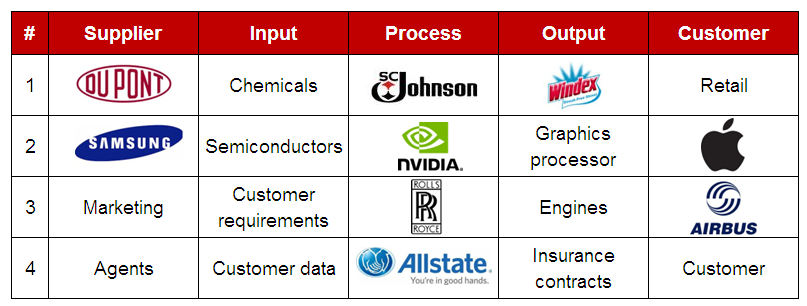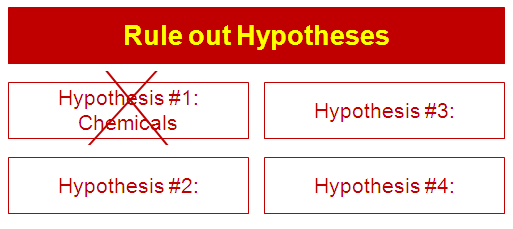Messy processes everywhere
SIPOC is not a nice sounding acronym, but it’s a useful way to think through problems. Clients often present consultants with complex processes that seemingly don’t have a start or a finish. They go on-and-on. They are inter-related processes and it feels like an ugly excel formula full of nested if / then statements. The more you dig, the more you uncover.
Structured thinking
Sometimes, the best thing is to stop digging. Take a step back and think through the problem. Untangle the problem in a more structured way. Figure out what sits outside the process. What is the client really asking for? What comes before the process (#1) and what comes after the process (#3).

Supplier, Input, Process, Output, Customer (SIPOC):
Building on that example, a SIPOC diagram can be drawn out from left-to-right; suppliers provide inputs to a process, which in turn, provides outputs to customers. It is a simple daisy-chain of activities and the real scope of the project is the area shown in red. The process in the middle is what you are after. The stuff on the left (suppliers, inputs) and the right (outputs, customers) are not really under your control, or potentially out of scope.
Focus on the “P” process

Find the suppliers and the customers
- Business-to-consumer (B2C): Cleaning products
- Business-to-business (B2B): Apple Airbook
- Internal product design: Airbus engines
- Sales support: Allstate insurance policies

#1. Use SIPOC to control scope
Clients may ask for additional work or small favors, under the same contracted fee. The consultant might say yes a few times, but eventually there could be some over-promising. SIPOC is one of the tools to guard against scope creep and better define scope of the process improvement project.
#2. Use SIPOC to rule out hypotheses
In the example above, if SC Johnson was having process issues, one hypothesis might be related to their supplier’s chemicals.
- If the chemicals are the problem, you are well on your way to solving the problem
- If the chemicals are not the problem, you strike it off the list of hypotheses, and move on to other potential hypotheses “suspects”

Process improvement projects are common
There is a bit of a myth that management consultants spend all their time on strategy projects. While this might be true for a minority of top-shelf consiglieres, in reality, a lot of project work is very operationally-focused. As you can imagine, Fortune 1000 companies have lots of processes (across geography, across business units, across functions) that are generally going haywire and need re-wiring. Also, ops projects tend to have a more measurable return on investment (ROI) and lower risk of implementation.
Yes, big 3 firms do plenty of process
A few case studies where I am sure the teams benefited from some type of SIPOC analysis.
- Bain helps food processor trims supplier relationships
- McKinsey helps improve credit underwriting process
- BCG helps banks unlock value with end-to-end process transformation

Thanks. This post has guided me to think in a structured way. I have been making use of similar approach for my research studies & career as a consultant.
Cheers
Mike
Thanks for the comment and reading.
The rule of hypothesis in eliminating the possible suspects by getting the whole team to participate is a eye opener … thanks
I was skeptic but has proved me wrong post implementing …
shyam
Thanks for reading. Keep doing great work.
Thanks for explaining such a good tool !
Winning,